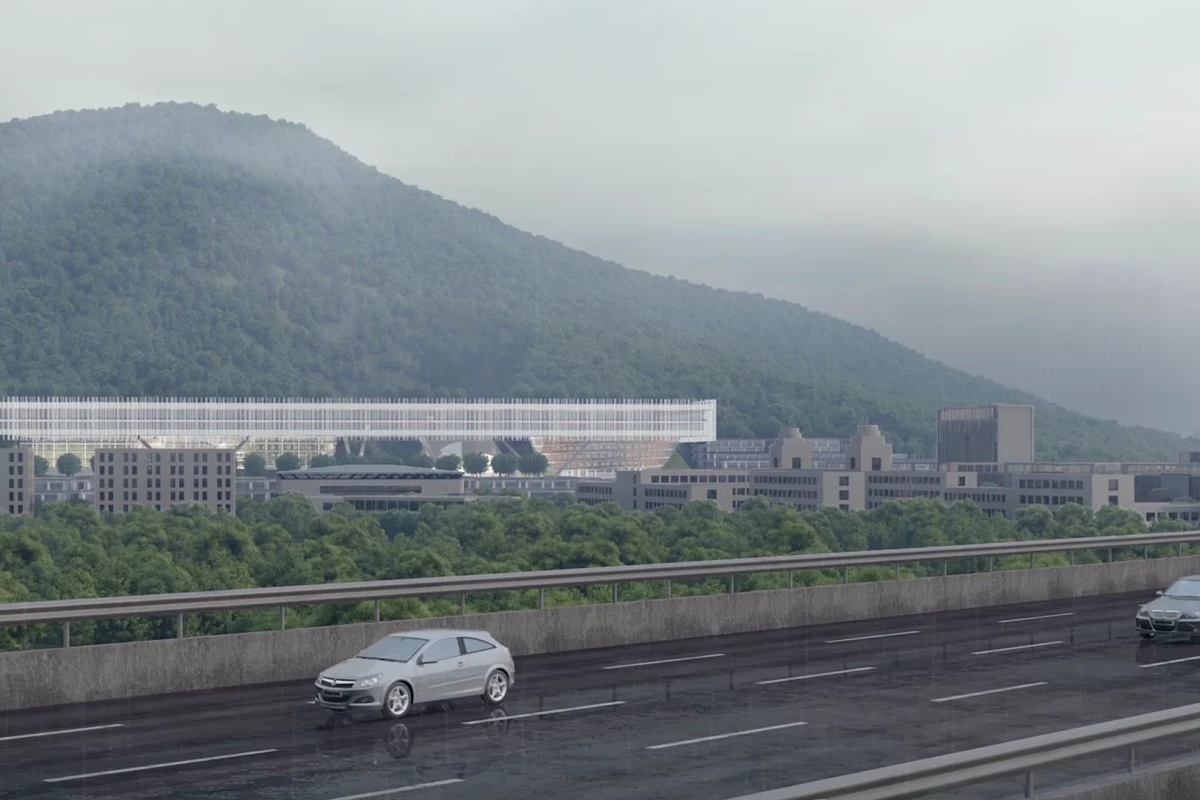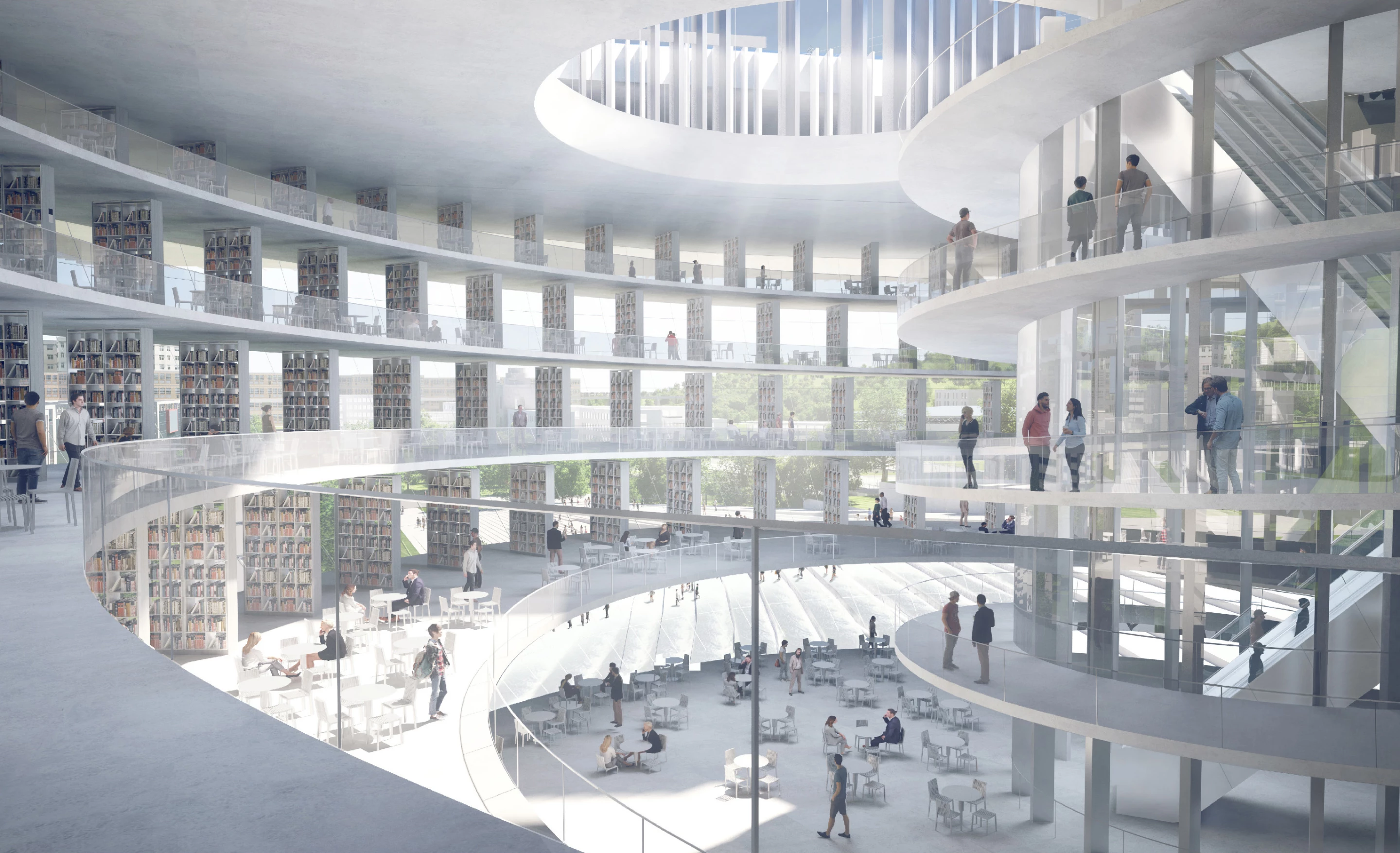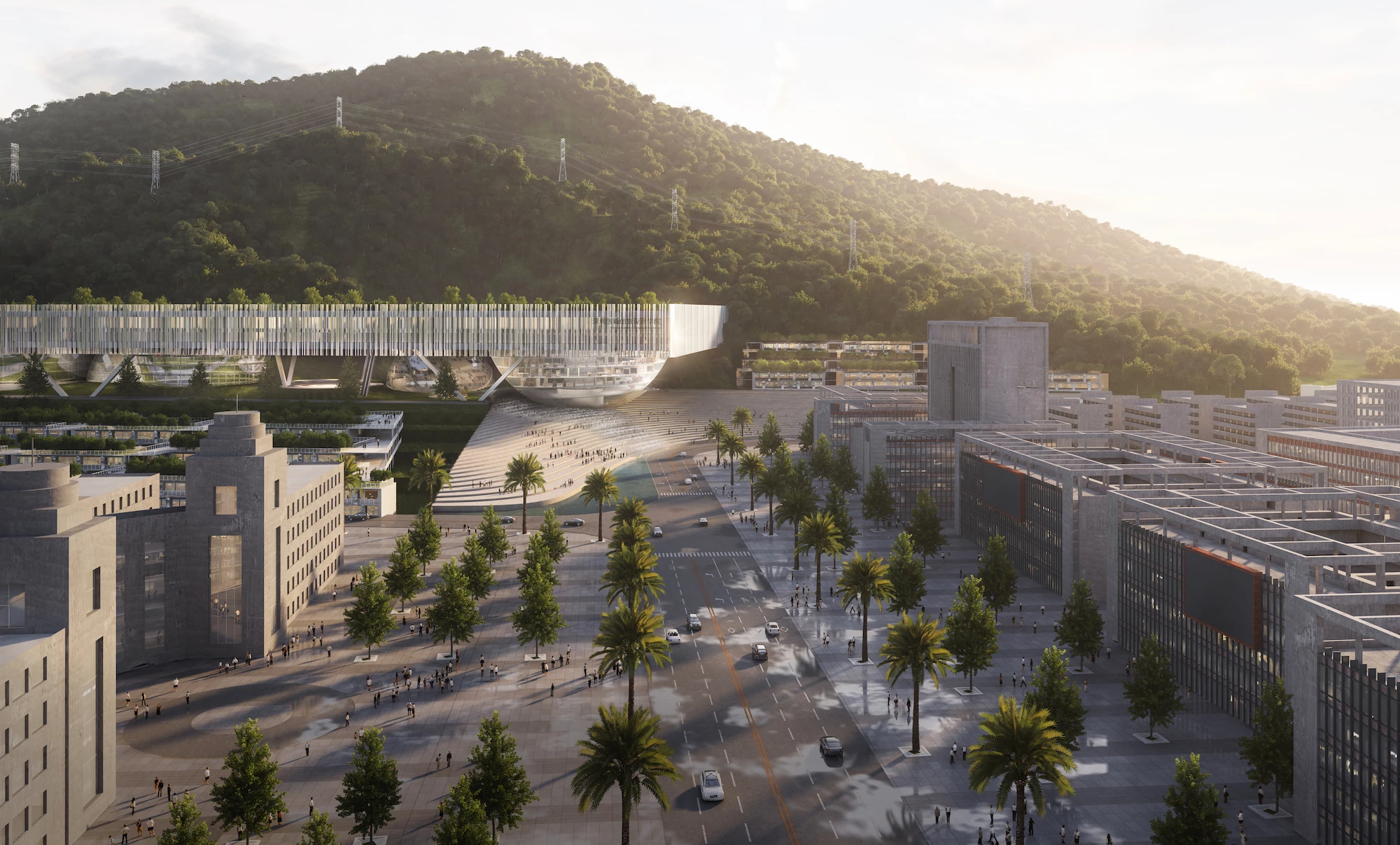Shenzhen, China, isn't exactly lacking in huge buildings but a new university by Dominique Perrault Architecture and Zhubo Design, with engineers BuroHappold, would stand out even in that booming megacity. Assuming it actually goes ahead as planned, it will measure 708 m (2,322 ft) long, or almost half a mile, and will be topped by a green roof that hosts parks, sports grounds, and pathways.
Bringing to mind Google's "Landscraper," the Shenzhen Institute of Design and Innovation will be longer than most of the world's skyscrapers are tall, as well as longer than nine Boeing 747-8 airplanes lined up, nose to tail. The project is part of a wider construction boom going on in Shenzhen at the moment that includes works by Zaha Hadid Architects, MAD, and more.
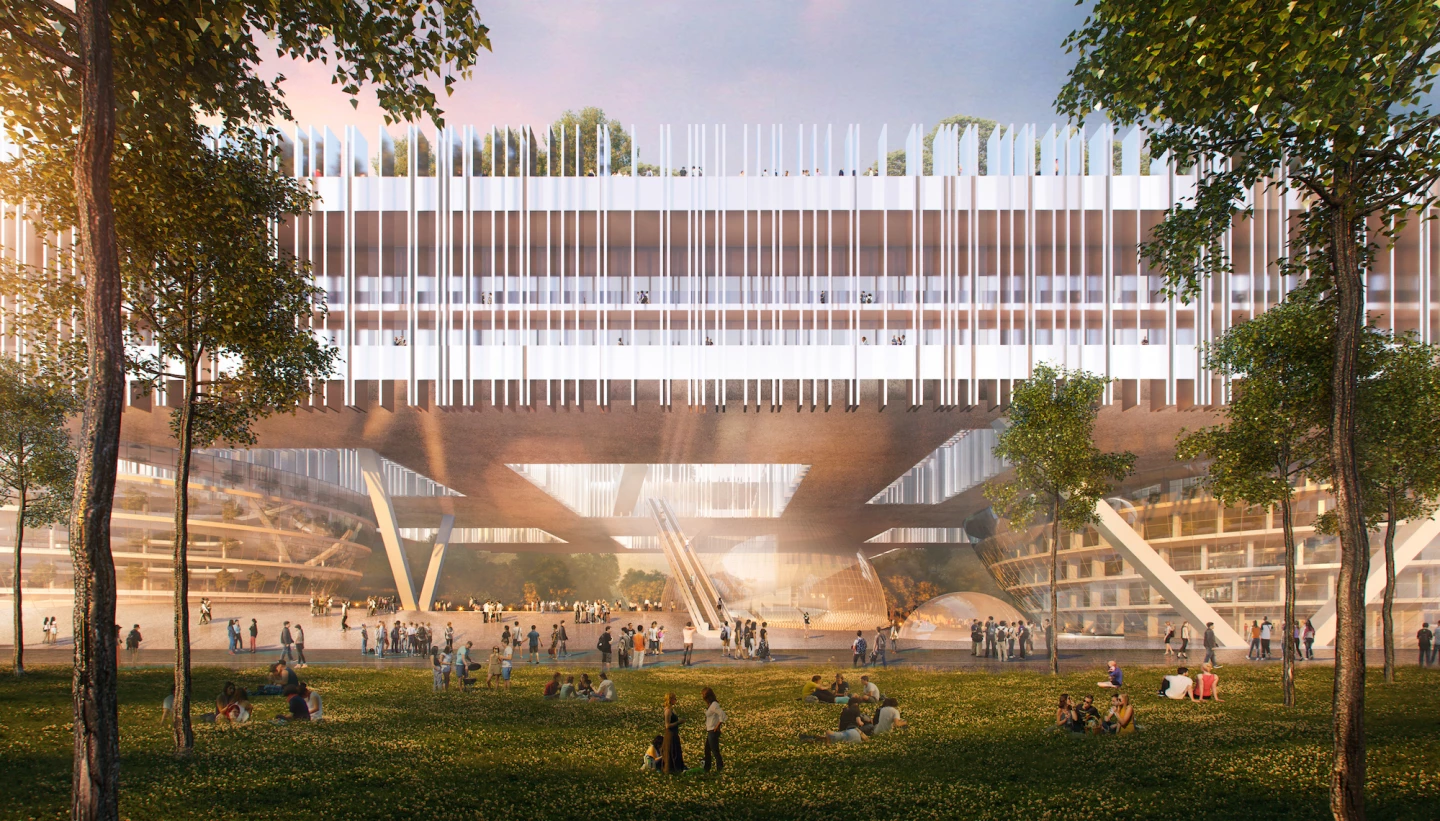
It will be part of the Southern University of Science and Technology and serve around 4,000 students. The building will be raised above the ground on supports and defined by a largely glazed facade that will be broken up by thin vertical lines of metal. Though remarkably long, it's not actually envisioned to be very tall at just 20 m (65 ft), with the idea being to help it take its place in the semi-rural landscape on the outskirts of the city.
"The site chosen for the new campus is located on the outskirts of Shenzhen, in a still mainly rural area, along the mountain relief of the Phoenix Mountain," explains the press release. "The project is integrated into the landscape, and preserves the legibility of its horizontal structure, ensuring that no prominent architectural element would disturb this plateau geography."
Its interior will measure 300,000 sq m (roughly 3.2 million sq ft) – or roughly two thirds the size of Vatican City – though even this is nowhere near China's largest building, with Zaha Hadid's Beijing Daxing International Airport being considerably larger, for example. The available floorspace will be divided into classrooms and laboratories, a library, an auditorium, cafeterias, and student and teacher housing. The space underneath the raised building will be pedestrianized too and feature a promenade.
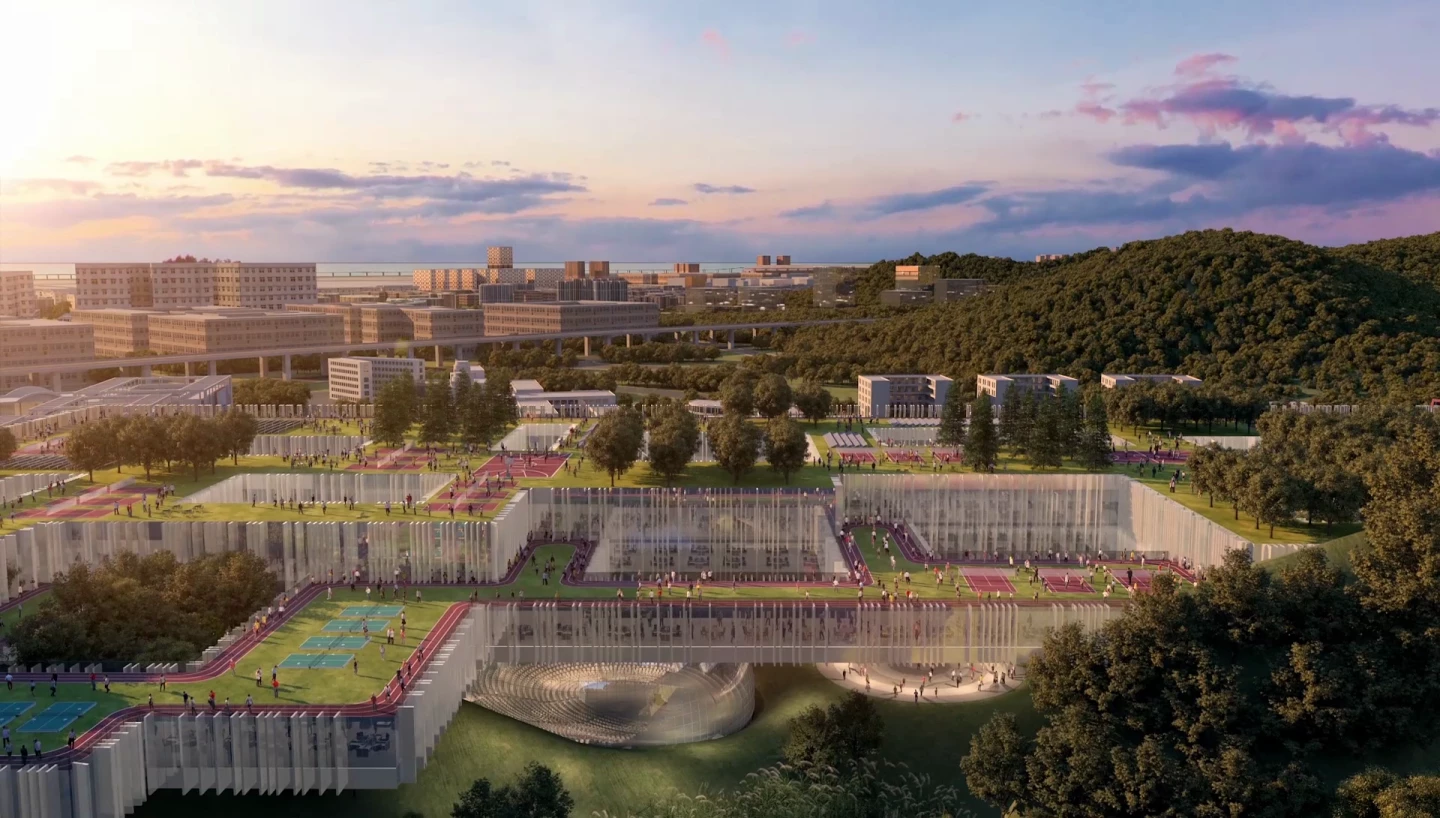
While such a huge building can't really be considered sustainable in any meaningful sense, it will still feature some energy efficient design. The roof will be heavily landscaped, improving its overall insulation, says the designers, while also providing space for sports and other activities. Additionally, solar panels will provide power.
The design recently won an architecture competition that included some big names like MVRDV and Studio Libeskind, though we've no word yet on when it's expected to begin construction.
Source: Dominique Perrault Architecture
